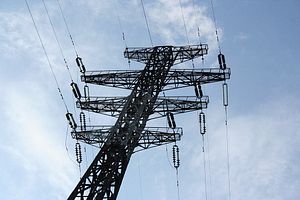Nearly a decade after the idea for the Central Asia South Asia (CASA-1000) Electricity Transmission and Trade Project first hit the drawing board, it appears we may finally have a date for the project’s official groundbreaking. According to Pakistan’s The Nation, the project – transiting excess Kyrgyz and Tajik electricity to markets in Afghanistan and Pakistan – will be inaugurated on May 12. The groundbreaking will follow the laying of the “foundation stone” on May 11 in Dushanbe, per Pakistan’s Daily Times.
The announcement, on its face, appears to represent a notable step toward the culmination of years of frustrations, finagling, and fruitless discussions surrounding the project. Indeed, the news follows a recent flurry of rhetoric and nominal activity surrounding CASA-1000. As the Daily Times report continued, high-level meetings this month among CASA-1000’s planning committees reorganized the requisite converter stations, and set a timeline for floating tenders therein. The deputy minister of Afghanistan’s Ministry of Energy and Water, Amanullah Ghalib, also told TOLOnews that the project was “in its final stages. The project will be completed by the end of 2018.”
The celebratory mood surrounding CASA-1000’s looming groundbreaking parallels the lofty rhetoric we saw swirl last December, at the groundbreaking of the Turkmenistan-Afghanistan-Pakistan-India (TAPI) pipeline. The parallel makes a certain degree of sense, after all: Both projects remain linchpins within the United States’ New Silk Road initiative in pushing Central Asia’s integration with South Asia, with USAID describing CASA-1000 as something that could have a “game-changing impact” on the region.
Unfortunately for planners and regional officials alike, however, the parallels don’t end with the heady rhetoric. Much like TAPI – which has effectively become a “virtual” pipeline, as University of Glasgow Lecturer in Central Asia Studies Luca Anceschi has noted – CASA-1000 has seen its geopolitical underpinnings collapse in a fit of regional tensions and infrastructural decay. At the risk of repetition, the issues buffeting CASA-1000 have only spiked over the past few years, ranging from Kyrgyzstan’s hydropower degradation to Afghanistan’s swelling security threats to Uzbekistan threatening outright “war” over Tajikistan’s involvement in the grid. (For the full litany of issues undercutting the project, check the April issue of The Diplomat magazine.) There’s been no movement to rectify any of the piling problems; instead, officials have held regional fora plugging how much revenue the project will generate, and how quickly the project can act as a salve for regional connectivity. It’s little surprise that Central Asian governments, watching their hydrocarbon- or remittance-based economies crater, have emphasized the recent activity surrounding these projects.
If anything, the upcoming groundbreaking looks – just as it did with TAPI – as little more than movement for the sake of movement alone. The summit next month has already been tabbed as a glorified photo-op, which it’s almost certain to be. More than that, though, the meeting will allow the regional officials to flip back to their domestic populations and claim that the region has jumped one step closer to economic and infrastructural integration, benefiting all. In reality, though, the groundbreaking appears to be yet another opportunity for regional officials to laud a “virtual” project – one that remains no closer to fruition than the TAPI pipeline that’s supposedly being constructed alongside.

































